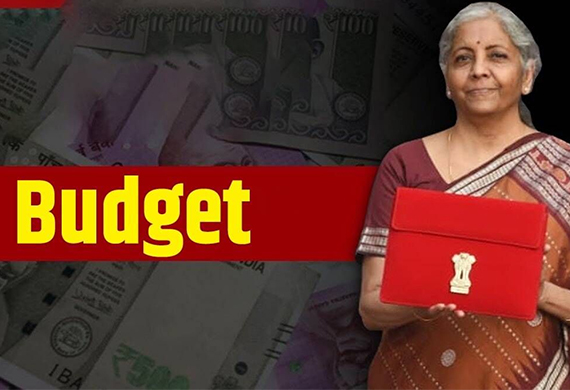
Here is what Union Budget 2023 has in Store for Indian Women
By: Navyasri CN
The financial budget is a yearly financial plan announced by the government that outlines revenue and expenditures for the upcoming financial year. It is aimed at balancing the government's finances, promoting economic growth, and ensuring equitable distribution of resources.
In recent years, the government has been announcing various benefits for women in the financial budget, to promote gender equality and empower women.
Some of the benefits announced for women in recent budgets include Increased allocation for women-centric schemes and programs, the creation of dedicated funds for women's welfare and development, and the Introduction of tax benefits for women, such as a lower tax rate for women employees and incentives for employers to hire more women, provision of loans and subsidies for women entrepreneurs, to encourage entrepreneurship among women and support their business ventures and many more.
Overall, the financial budget provides a comprehensive plan to address the various needs and challenges faced by women in India and aims to empower them economically, socially, and politically.
The Union Budget was delivered by the Finance Minister, Nirmala Sitharaman, who made several announcements, including changes to income tax brackets, lab development, promoting inclusive growth, lowering some customs duties, and the development of a green economy.
In her opening remarks, FM referred to this budget as the "first Budget of Amrit Kaal" and described it as a roadmap for India@100 centered around seven key goals that serve as the "Saptarishis" directing her outlook. She also pointed out that the world now recognizes India's economy as a shining star with a promising future as seen by the country's growth rate of 7%.
But whether this growth objective can be met without the women, who make up approximately half of India's population, is a crucial topic that needs to be highlighted. Therefore, it is important to understand what the Union Budget 2023 has in store for Indian women and how it seeks to emancipate them.
Self Help Groups
The Union Budget 2023, which places a high priority on increasing rural income and achieving financial independence, has helped women's self-help groups (SHGs) advance to the next level of economic empowerment by providing them with raw material supply, branding, product marketing, etc.
This is a crucial step since SHGs can engage women in a revolutionary way—as was already seen during the COVID-19 pandemic—and can thus help increase women's participation in the labor force in the foreseeable future.
The Finance Minister further noted that the Deen Dayal Antyodaya Yojana National Rural Livelihood Mission" which was the part of the Financial budget 2019-2020 has achieved amazing success by mobilizing rural women into 81 lakh Self Help Groups" (SHG).
Mahila Samman Saving Certificate
The finance minister also announced the launch of a brand-new small-savings program for women. The program, known as the Mahila Samman Saving Certificate, will have a fixed interest rate of 7.5% and be accessible until March 2025.
A deposit of up to 2 lakh rupees can be made under this program in the name of a woman or a girl child for a maximum of two years. The program also includes a partial withdrawal option to assist women in dire circumstances, making it a significant financial assistance program for Indian women.
Income Tax slabs likely to benefit Salaried Women
Additionally, the income tax slabs established under the new tax regime are anticipated to help salaried women and people with formal jobs, especially those from middle-class backgrounds, improve their ability to save and make wiser investment decisions. Compared to women earning 5 lakhs who were excused from paying taxes under the previous tax system, women earning up to 7 lakhs will not be needed to pay taxes under the new tax system.
These indicators suggest that this year's budget has made a persuasive effort to increase the financial independence of women and to support their economic empowerment by giving them access to more resources.
Changes made to the previous Budgets
According to an analysis by the All India Democratic Women's Association, the gender budget declined from 0.71% of GDP in the revised estimates for 2021–22 to 0.66% in the forecasts for 2022–23. (AIDWA). The gender budget makes an effort to track resource allocation in a way that will aid in addressing such problems. There are two components to it. The first is about completely female-focused schemes. The remaining are programs with at least 30% of the benefits going to women.
With the ministry receiving Rs 20,263.07 crore, the budget for the Ministry of Women and Child Development as a percentage of spending has decreased from 0.57% to 0.51%.
The ministry's budget for programs like Beti Bachao, Beti Padhao, One-Stop Centers, Nari Adalat, Mahila Police Volunteer, and Women's Helpline that are concerned with the safety of women decreased from Rs 587 crore to Rs 562 crore.
The same ministry's Mission Vatsalaya, which provides services for child care and protection, witnessed a 63.5 percent increase to Rs 900 crore.
168 crore, a slight increase from 162 crores last year, has been allocated to autonomous agencies, including the Central Adoption Resource Agency, the National Commission for the Protection of Child Rights, and the National Commission for Women.


.jpg)



